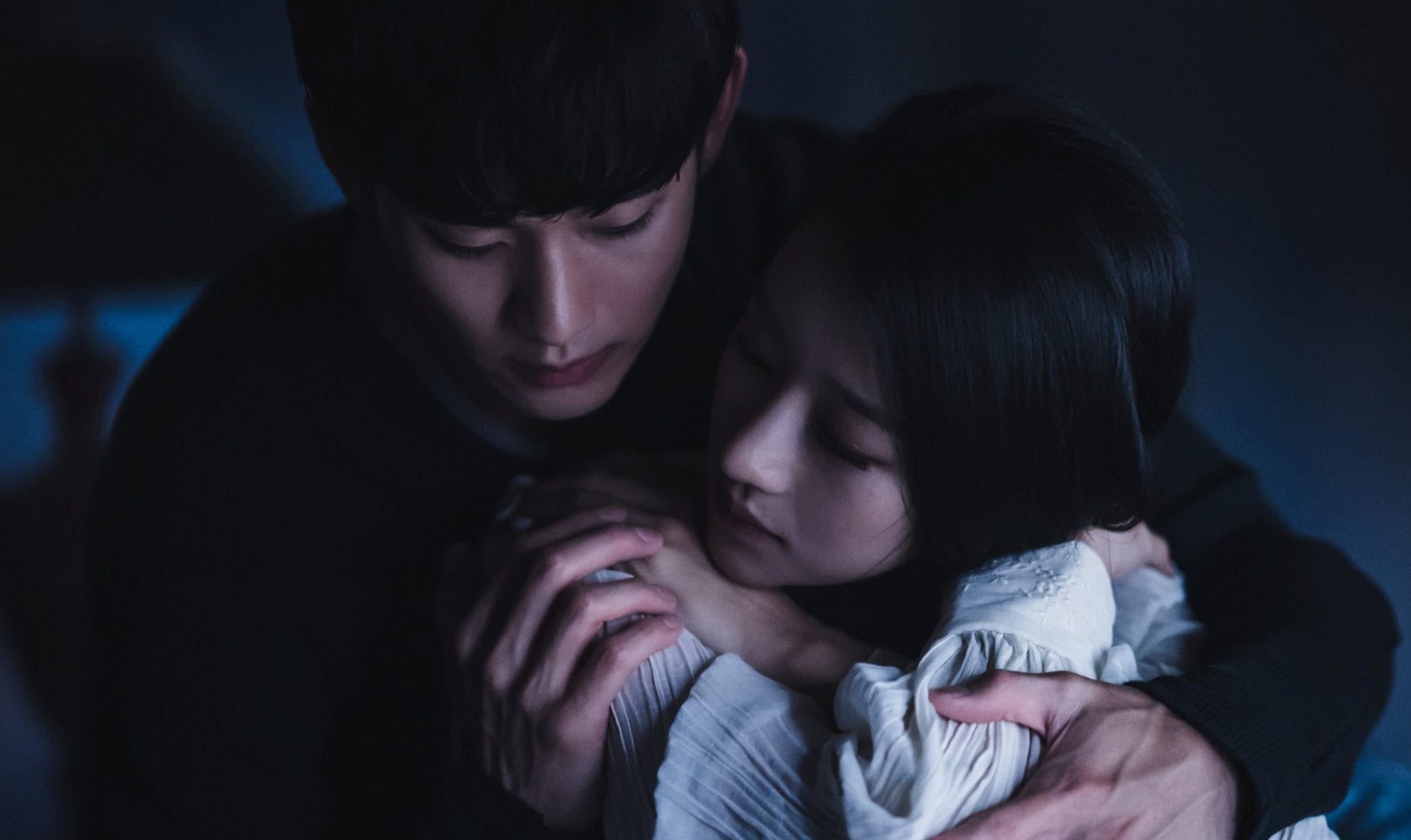Right from the gothic, stop motion animation reminiscent of Tim Burton’s art style as the opening sequence, the premise of “It’s Okay to Not Be Okay” is established as a dark fairy tale of its own. The different episodes are titled after such fairy tales— some classic stories and others created by the protagonist Ko Mun Young (Seo Ye Ji)— and hold the metaphorical key to her basement. As we’ve reached at the halfway point of the series, here are some theories about how the story may progress.
The Key: The Basement

From the very beginning of the drama, Ko Mun Young’s basement is presented as a critical element of the trauma that surrounds her. In multiple flashback sequences, a little girl is seen going down to the basement with a floor stained with blood. She follows a trail of blood flowing from underneath the basement door and unlocks it, only to find her mother’s supposed corpse on the ground. It is not certain that Mrs. Ko is dead, however, for it’s said she has simply disappeared after finishing her last book, “The Murder of the Witch of the West.” She was then registered deceased five years after her disappearance. Ko Mun Young herself refers to this when she says that her mother has been registered dead but her soul is alive. Throughout the series, the basement serves as the motif for uncharted territory and repressed trauma that repeatedly demands to be let out, manifesting itself physically via a malevolent supernatural presence in Ko Mun Young’s (and later her father’s) hallucinations. There appear to be no real ghosts except for the skeletons in the Ko family’s closet that haunt the survivors of the cursed castle. Ko Mun Young recognizes that although she lives her life detached from the cursed castle, making more than enough money for an extravagant lifestyle, it is all a distraction and she is not truly happy. Her cold front and “diagnosis” of antisocial personality disorder are nothing but defense mechanisms. In Episode 3 (“Sleeping Witch”), Ko Mun Young returns to the cursed castle — the scene of crime, misfortune, and haunting darkness— having found her “red shoes” in Kang Tae (Kim Soo Hyun). This is her initiation and the beginning of what can only result in a resolution — painful or otherwise — of years of emotional wounds.
Theory 1: Ko Mun Young’s Mother Might Be Alive
Despite her displayed hatred and fear towards her mother, Mun Young seems convinced for a second that a delusional patient named Kang Eun Ja— who believed Mun Young was her daughter and expected Mun Young to recognize her despite a few plastic surgeries— was truly her mother who had come back.


The look in her eyes is not that of hatred, but longing. Such a strong conviction, even though it lasted for a second, would be unrealistic if she had truly seen her mother die right in front of her eyes. This leaves the possibility for an open ending where her mother did not in fact, die, despite her father’s attempt at her life. However, if this is true, then what really happened in the basement and why are there bloodstains on the floor? Only time will tell.
Theory 2: Ko Mun Young’s Mother Is The Psychopathic Antagonist


It is only in Episode 3 that we come face to face with the “mother” figure. In a ‘Rapunzel’ like scenario, we see the mother obsessing over her child to the point of objectifying her as her best creation. An author herself, Ko Mun Young’s mother quite possibly thought of her daughter as her masterpiece. As such, she locked her up in the cursed castle, cutting off and discouraging any contact with the external world by threatening her with frightful repercussions, even abuse. She constantly referred to her as “different” and a “monster,” leading the child to believe the hurtful words herself. Her cruelty is taken a step further as she threatens to kill her “prince” if he ever came to save her. Thus, Ko Mun Young’s mother effectively grooms her into strictly behaving as her mother deemed fit: cold and repulsive, like a monster. We see an active conflict in Ko Mun Young between how she’s “supposed” to act and how she actually does, especially with respect to Kang Tae. The hard shell of her diagnosed disorder, her selfishness, arrogance and even violent tendencies crumble in front of him as she surrenders, even unknowingly. However, her nightmares always involve her mother and her threatening presence over her. We are lead to believe the basement is where Mun Young’s mother met her end, but is it actually the key to the abuse between Mun Young and her mother?


We share a vision with Ko Mun Young where she watches her mother drown while begging for help. A later reference made to her mother always singing “Oh My Darling Clementine” to her (the darker undertones of which are pointed out by the father) might have had an influence on this nightmarish vision. Ko Mun Young might have seen her mother die and refused to save her, putting her own self-interest first. She might also have created this illusion in her head out of guilt for not being able to save her mother. This perhaps is what makes her a true monster in her father’s eyes, which leads him to being hostile towards her to the point of wanting to kill her. Alternatively, driven by the desire to rid Ko Mun Young of constant nightmares and unthinkable trauma about watching her mother die, her father might have wanted to “save” Ko Mun Young before killing himself too, ending the cycle of pain, as he can be heard telling her “it’ll all be over soon” as he strangles her.
Theory 3: Ko Dae-Hwan Killed His Wife
We’ve come to know from CEO Lee Sang In (Kim Joo Hun) that the cursed castle was built by Ko Dae Hwan (Lee Eol), Ko Mun Young’s father, in celebration of her birth. The house was built in the middle of a remote forest so her mother could focus on her writing. Perhaps, he too possessively wanted to lock his precious wife away from the world which led to the negative behavior she developed towards her child. Similarly, it is also possible that he had prior knowledge of his wife’s anti-social tendencies and that was the reason for the family moving to a remote forest— away from society— where she wouldn’t prove a danger to the people around her. Her harmful behavior can be countered by the fact that her last book was titled “The Murder of the Witch of the West.” We all know the story of how Dorothy defeated the Wicked Witch of the West. Ko Mun Young’s mother was perhaps advocating that the green-skinned witch was simply misunderstood because she was different and was therefore murdered in cold blood.


Just as Mun Young can be assumed to have been groomed, her mother might also have been a victim of toxic manipulation from her husband who ultimately intended to murder to get rid of his wife (his own “monster”) believing it to be the right and noble thing to do. It is quite evident from the scars on his hand that his daughter has had to quite literally claw her way out of death from her father’s hands, so perhaps her mother did as well. Is that what actually took place in the basement? In the present, Ko Do Hwan, now a dementia patient, still sees the monster lurking. However, it exists in Ko Mun Young who has grown up to be the spitting image of her mother. Despite apparently having lost all his memories, his first instinct on seeing her is still to eliminate her.
Theory 4: Mun Young, Kang Tae, & Sang Tae’s Mothers Are Connected
Owing to drama tropes and the extent to which the lives and experiences of Ko Mun Young and Kang Tae appear to be intertwined, it would not be a far stretch to assume that the murder of Kang Tae and Sang Tae’s (Oh Jung Se) mother had something to do with the Ko family. Mun Young despises butterflies. Meanwhile, Sang Tae, who was a witness of their mother’s murder, is terrified by them as he believes the butterflies are what killed her. Sang Tae, like Mun Young, is inexplicably drawn to the basement of the cursed castle which holds the portrait of a woman, possibly that of Mun Young’s mother. However, it’s just as possible it could be someone else entirely.


Despite Mun Young’s cautionary tale about Bluebeard, Sang Tae’s transgression into her basement is necessary and pivotal for he knows who killed his mother. It is only when these character are faced with the basement head-on will salvation be possible. Bluebeard’s tale is turned on its head as the knowledge gained by exploring the bloody chamber is instrumental to our characters’ deliverance. The test is whether they can acquire this knowledge and use it slowly and surely to triumph over their trauma. Will Belle really be able to embrace Beast after all?


What do you think of our theories about “It’s Okay To Not Be Okay”? Which one do you think seems to be the most likely? Make sure to let us know your own thoughts and theories as well!
The next episodes of “It’s Okay to Not Be Okay” will air on July 18th and 19th at 9 p.m. KST.
Are you watching “It’s Okay to Not Be Okay”? What do you think the second half of this drama will bring? Let us know your thoughts by tweeting to us @whatthekpop1!
Ishani Sarkar is a self-professed learner for life, trying to find meaning and happiness in the smallest of things. She found her safe haven within the world of Korean entertainment and she’s never letting go.
Media: tvN/Netflix

